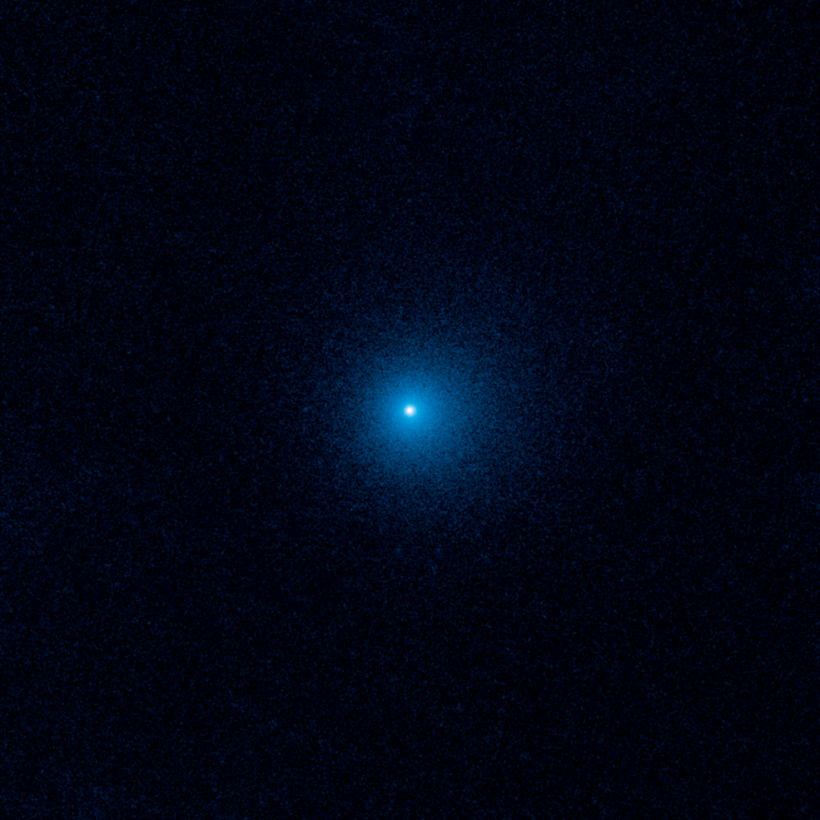
This Hubble Space Telescope image shows a fuzzy cloud of dust, called a coma, surrounding the comet C/2017 K2 PANSTARRS (K2), the farthest active comet ever observed entering the solar system. The image was taken in June 2017 by Hubble's Wide Field Camera 3.
Comet C/2017 K2 (PANSTARRS) entered the planetary zone of our solar system in September 2017, spewing out an 80,000-mile-wide (130,000-kilometer-wide) fuzzy cloud of dust known as a "coma" in astronomy circles. The Hubble Space Telescope captured the comet's image in June that year, which you can see above, when it was 1.5 billion miles (about 2.4 billion kilometers) past the sun, according to a news report by CNET.
And now, in just a few weeks, that massive comet will make its closest approach to Earth.
When Will It Fly the Closest to Earth?
In a separate CNET report, it noted that on July 14, comet C/2017 K2 will be closest to us in its current passage through the inner solar system. It will still be far away from us even at its closest approach. Despite its size, this will likely make it impossible to observe the comet without at least a modest telescope.
Meanwhile, on Dec.19 this year, the comet will be at its closest approach to the sun, as per EarthSky.
Read More: Hubble Space Telescope Snaps a Photo of Globular Cluster Ruprecht 106
C/2017 K2
NASA noted in a statement that the comet, known simply as "K2," is most likely from the Oort Cloud, a distant, comet-heavy, and extremely icy region of the galaxy. The comet's picturesque coma isn't caused by evaporating water ice, as is the case with most comets. According to University of California Los Angeles comet expert David Jewitt, the dusty cloud is most likely generated as frozen oxygen, nitrogen, carbon dioxide, and carbon monoxide convert from solids to gases as sunlight reaches the space object.
"These observations represent the earliest signs of activity ever seen from a comet entering the solar system's planetary zone for the first time," said NASA in its statement.
Early estimates put the dust and gas trail left behind by C/2017 K2 at between 81,000 and 500,000 miles (130,000 and 800,000 kilometers). CNET mentioned that it is somewhere between one and six Jupiters in breadth.
How Was C/2017 K2 Discovered?
According to NASA, the comet was discovered in May 2017 by NASA's Near-Earth Object Observations Program's Panoramic Survey Telescope and Rapid Response System (Pan-STARRS) in Hawaii. In late June that year, Jewitt utilized Hubble's Wide Field Camera 3 to get a closer look at the frosty visitor.
Although the tenuous coma is 10 Earth diameters across, Hubble's sharp "eye" detected the breadth of the coma and also enabled Jewitt to estimate the size of the nucleus - less than 12 miles across.
How to Watch the Comet?
CNET noted that you can see the comet for yourself by visiting public online observatories such as the Virtual Telescope Project, which will almost certainly organize watch parties at some point. You can even acquire a telescope and start practicing seeing objects right now with an app like Stellarium, which will also position your lenses in the appropriate direction when the comet approaches.
Whatever happens, this will most likely be our only opportunity to learn about this comet. Its orbit is so long that it will not return for millions of years.
Related Article: ISS Dodges Debris of the Soviet-Era Cosmos 1408 Satellite













